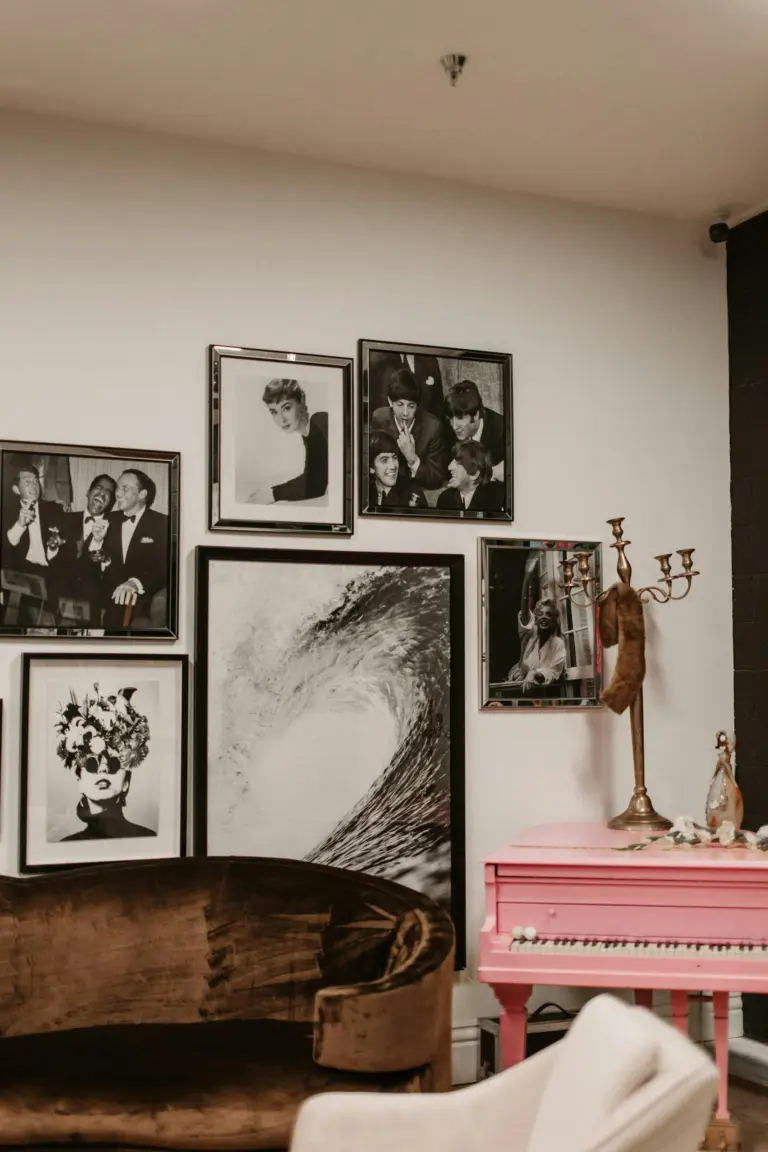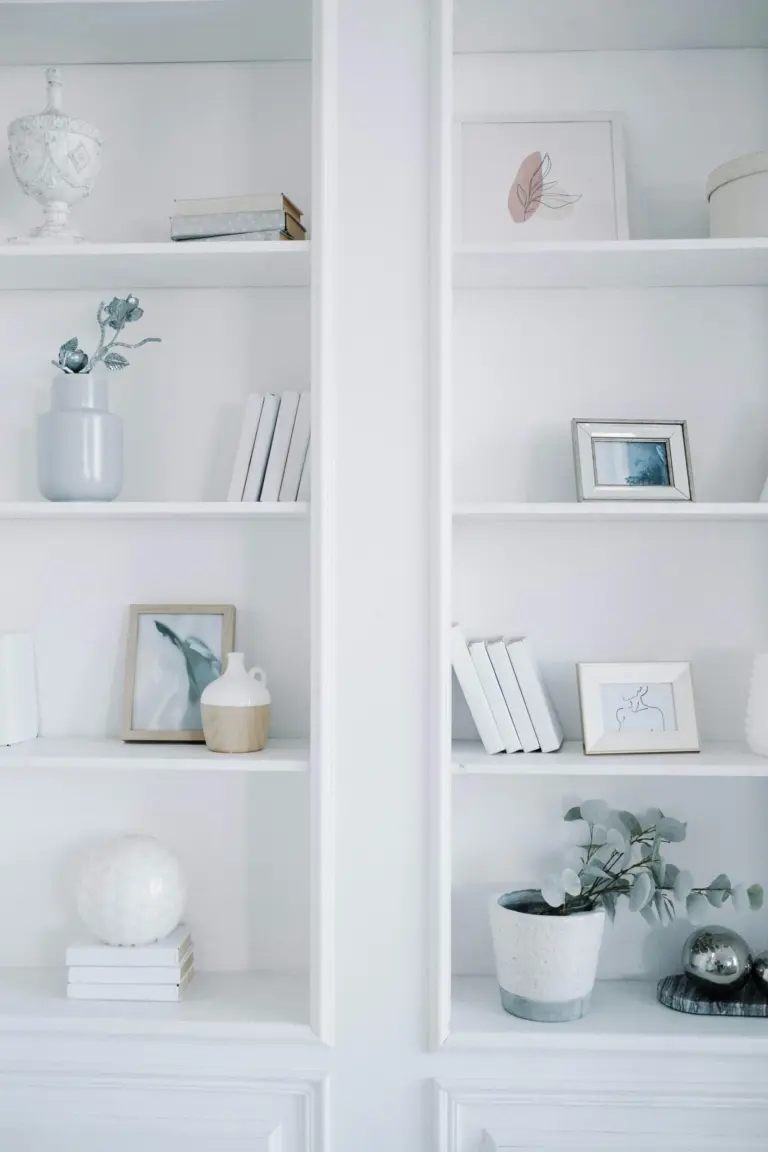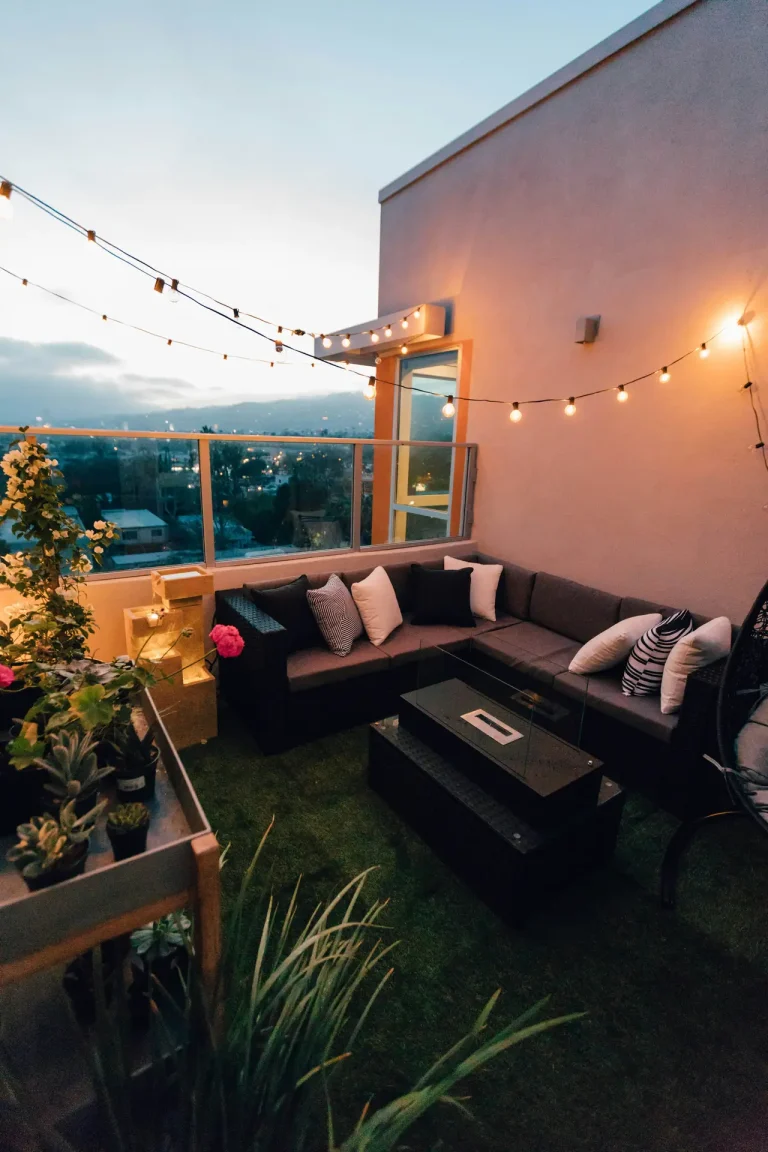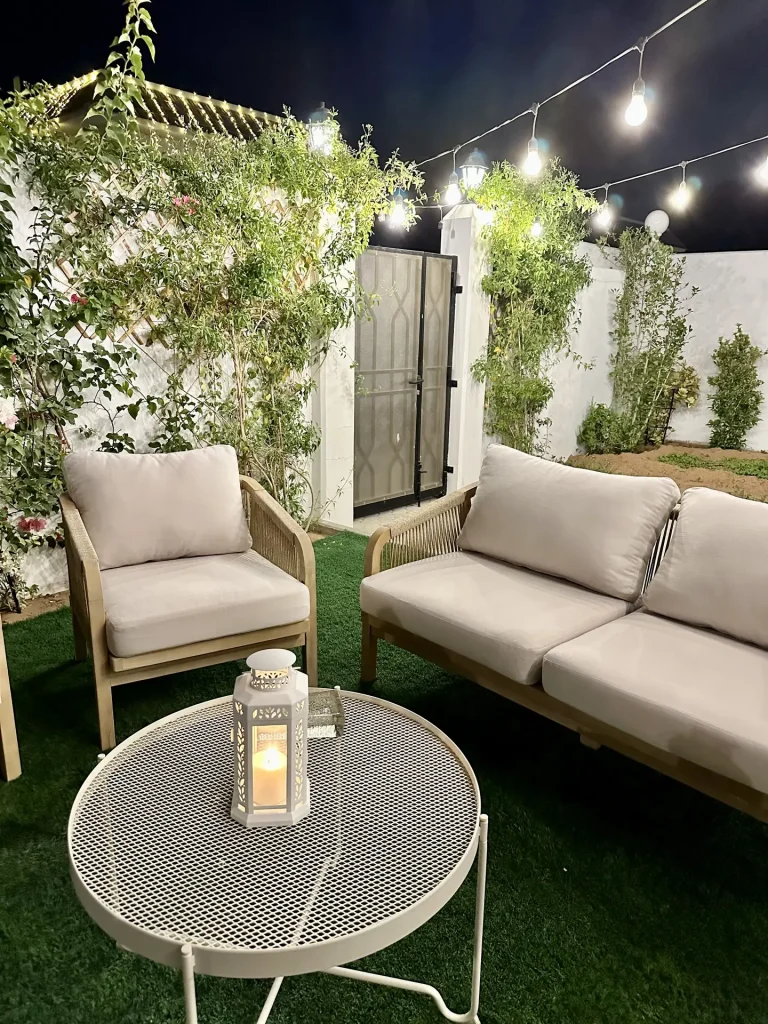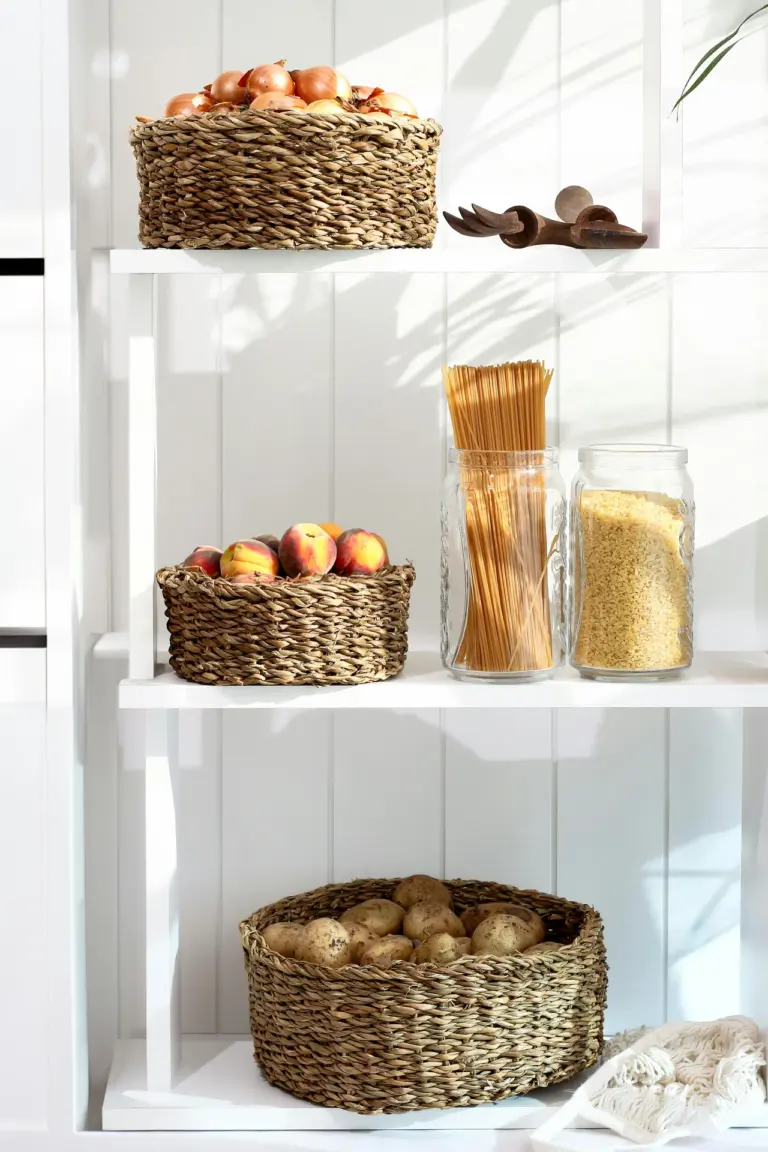How To Create A Cozy Living Room – A Full Guide (+16 Living Room Layout Ideas To Copy)
This blog post answers all your questions about living room layout ideas.
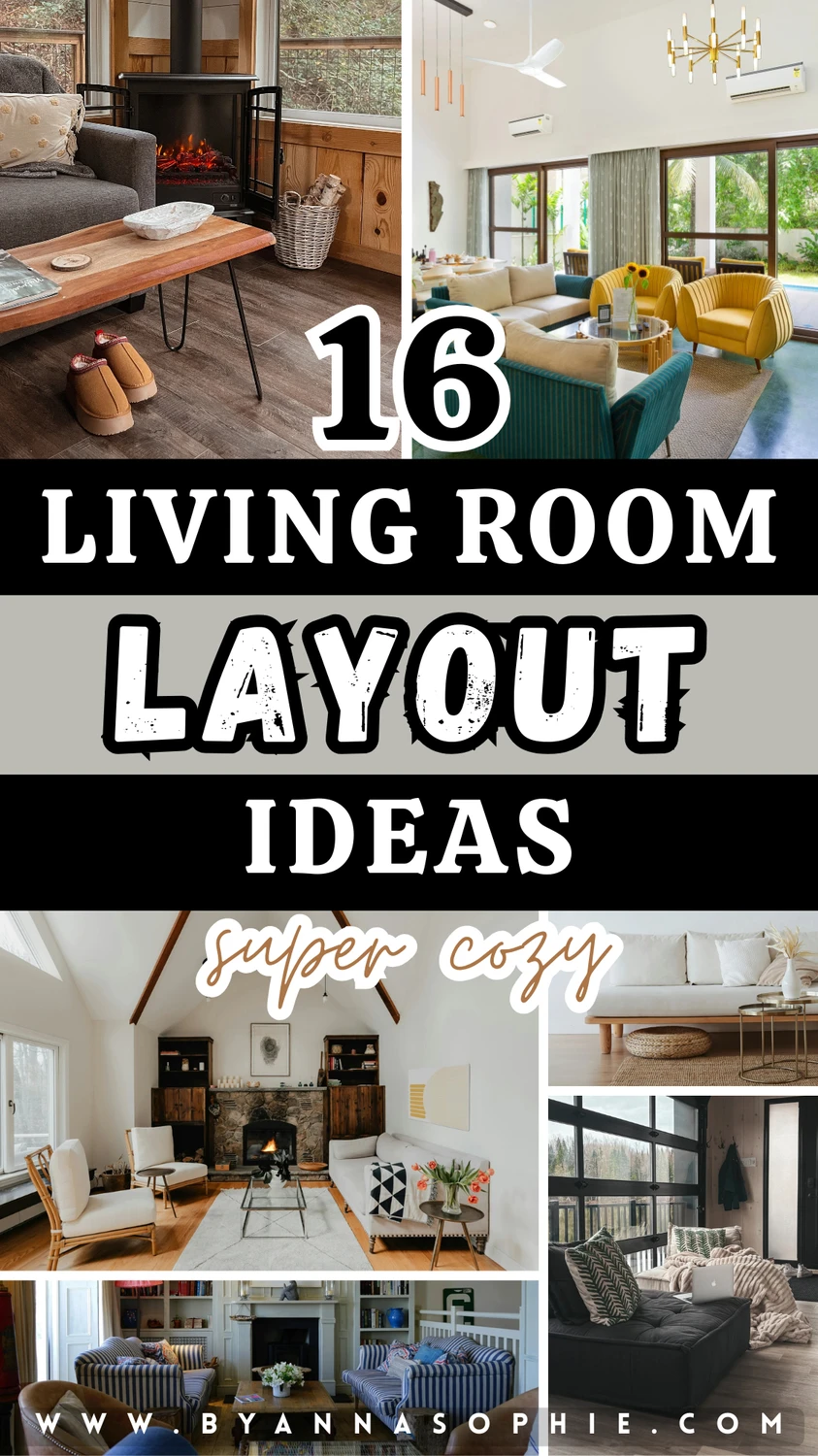
Think about the last time you walked into a living room and instantly felt like sinking into the sofa with a cup of tea: That’s the magic of cozy.
It’s not just about throwing in a few pillows or blankets, it’s about how space, light, texture and color work together to create warmth and comfort.
In this full guide, I’ll break down the real “cozy formula,” from understanding measurements, zones and sightlines to layering light, choosing the right materials and adding storage without losing style.
And because layout is one of the most important factors, I’ll share 16 cozy living room layout ideas, including clever small living room layout tricks, that you can copy right away.
Whether you’re starting fresh or simply looking for new cozy living room ideas, this guide will help you turn any space into a place you’ll never want to leave.
Speaking of cozy: Have you ever heard of farmhouse style? If you’re interested in farmhouse-style living rooms, I’ve put together 15 living room farmhouse decor ideas for a cozy home for you. But that’s just a side note 🙂
This site includes affiliate links, meaning I may receive a small commission, at no additional cost to you.
Cozy Formula: What Really Makes A Room “Cozy”
Cozy is about hitting all your senses: Soft light that doesn’t glare at you, fabrics you actually want to curl up in, quiet that lets you relax, smells that make the room feel lived-in and good.
The difference between cozy and just messy? Layering smart. Bring in warmth with throws, lamps, a candle or two but don’t go overboard and stuff every surface. Less is more here.
And yes, temperature counts too. When it’s cold out, your living room needs to feel warm. Got a fireplace or stove? Lucky you! You should definitely use it.
Understanding Space: Measurements, Zones & Sightlines
Alright, let’s actually do this. But hold up, before you start picking out sofas and paint colors, you need to understand your actual room. Like really look at it. That makes everything else way easier.
Measure the room: Grab a tape measure and map it out. Wall lengths, where the windows and doors are, outlets, anything that’s stuck in place like a fireplace or where your TV hookup is. You need to know what you’re working with before you can plan anything.
Figure out your zones: How are you actually gonna use this space? Watching TV? Reading? Working? Hanging out with people? Split the room up mentally into different areas for different things. This makes it way less chaotic.
What’s the main attraction? Every room needs something your eye goes to first. Fireplace, big piece of art, the TV, you name it. Once you know what that is, everything else can kind of support it instead of competing. That way you can keep the room from feeling scattered.
Distances & Sizes
Let’s head over to the next step: Distances and sizes.
Getting proportions right is what makes a room feel comfortable and visually balanced.
These simple rules of thumb help you to create a space that feels easy to live in.
Walkways: Aim for about 90cm of clearance for comfortable movement, with 60cm as the absolute minimum.
Sofa ↔ Coffee Table: Leave 35-45cm between the sofa and coffee table for legroom and reachability.
Coffee Table Height: Keep the table within ±5cm of your sofa’s seat height for a natural fit.
TV Distance: A rough rule of thumb is screen diagonal (in inches) x 1,2 – 1,6 = Viewing distance in centimeters.
Rug Placement: Place all front legs of your seating on the rug, with 20-30cm extending beyond the sofa on each side.
Wall Art: Center artwork at about 145cm eye level (standing) or leave 15-25cm of space above the sofa.
Curtains: Mount close to the ceiling or 10-20cm above the window frame, with rods extending an extra 10-15cm past each side.
The Biggest Cozy Lever: Layered Lights
If you want a room to actually feel cozy, you can’t just stick with one ceiling light and call it done.
You need different kinds of light working together: Your main overhead light or maybe some indirect lighting for general brightness. Then lamps where you’re actually doing stuff like reading, working and so on. And some smaller lights to highlight things, like those little picture lights or LED strips tucked somewhere.
Usually five to seven light sources in a room hits the sweet spot. It’s enough to create depth without it feeling like too much is going on.
Bulbs matter too. Go for warm white, somewhere between 2700-3000K. That’s the range that actually feels comfortable, not like you’re in an office. And get dimmers if you can, being able to adjust the light depending on the time of day is huge.
But here’s where it gets good: When you use light to show off textures in the room. Like letting it catch your plants or hit the curtains or bounce off wood or stone. That’s what makes a space feel alive instead of flat.
Textures & Materials: Layers That Keep You Warm
Coziness is a lot about what you can see and feel with your hands. When you layer different textures, a room just feels more interesting and inviting. Like somewhere you actually want to hang out.
Here’s what makes a difference:
Rugs
Those thick, soft rugs or wool ones immediately make a room feel warmer. You can even layer them: Put a flat jute rug down first, then a wool runner on top. This adds warmth and looks more interesting than just one rug laying there.
Curtains
Two layers work way better than one. Sheers underneath, heavier fabric on top. They help with sound too and the room feels more enclosed in a good way. Less echoey, more comfortable.
Cushions and throws
Mix up your textures, some woven, some knitted, maybe bouclé, some linen. Keeps it from looking boring but not so random that it’s chaotic. I usually like two bigger cushions, one accent one and two medium ones per couch.
Wood and natural stuff
Oak, walnut, rattan, anything like that brings warmth you can actually feel. It makes the space feel more grounded and connected to the outdoors.
Color & Style Guide
Having some kind of color plan makes decorating way less overwhelming. You’re not just guessing what goes together.
Warm neutrals are pretty foolproof, think greige, sand, toffee, deep brown. They’re timeless and grounding and don’t really go out of style.
If you want something moodier, go darker with forest green, ochre, charcoal, maybe some brass accents. It feels cozy and a bit more grown-up.
Or if you prefer things lighter and airier, that Scandinavian vibe works: Off-white, misty gray, sage, oak. Still warm but not heavy.
One thing I’ve learned: If your furniture’s white, don’t paint your walls stark white too. Go one or two shades warmer or grayer. Otherwise the contrast is too harsh and it doesn’t feel cozy.
And before you paint a whole wall some bold color, test it out with pillows or a throw first. It’s way easier to change your mind that way.
Storage Space Without Compromising On Style
Storage doesn’t have to mess up how your room looks. The best kind actually just blends right in.
Things like storage benches, closed cabinets or baskets shoved under a bench keep all your clutter hidden where it belongs.
And don’t forget about cables. Messy cords ruin the look faster than almost anything else. Get them organized or set up a charging station somewhere out of the way.
A basic rule: If you can see it, it should look like it’s supposed to be there. Almost like decor. Everything else needs to be tucked away somewhere.
Cozy Living Room Layout Ideas
So we’ve figured out that setting up your living room is really about making it flow right and feel balanced. Somewhere you actually want to hang out.
It doesn’t matter if your room’s tiny and awkward or big and open. How you arrange things makes a huge difference in whether it works or not.
That’s why I put together 16 different living room layout ideas. Have fun!
1. Face-To-Face
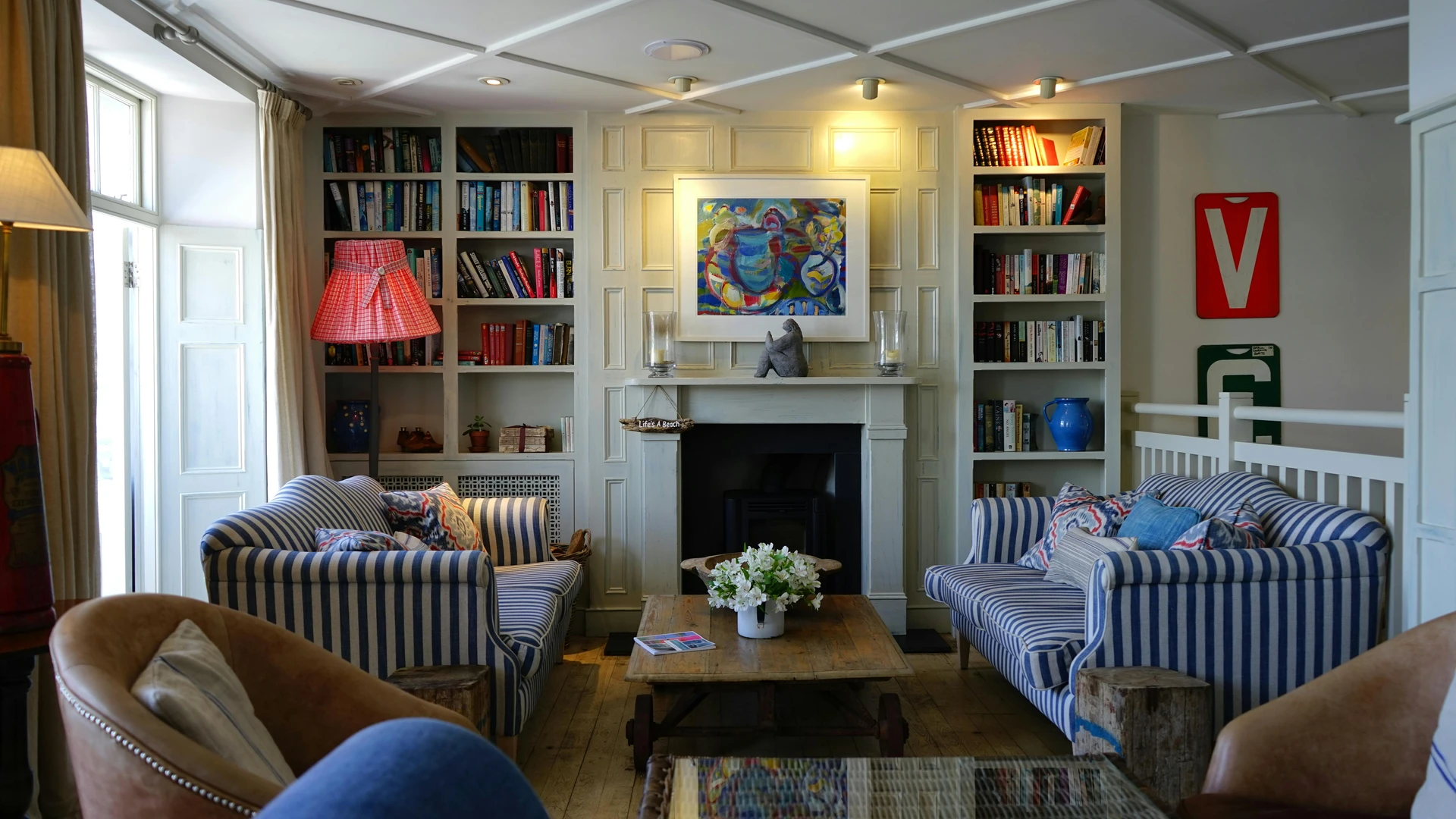
So if you put two sofas across from each other, people will just naturally sit and chat. It happens on its own.
Just put a rug underneath, a coffee table in the middle. Done.
I usually like matching lamps or tables on the sides to keep it balanced, then put some cushions and blankets around so it doesn’t look so uptight. Maybe add a plant or two to create a lived-in and inviting feeling.
2. L-Sectional
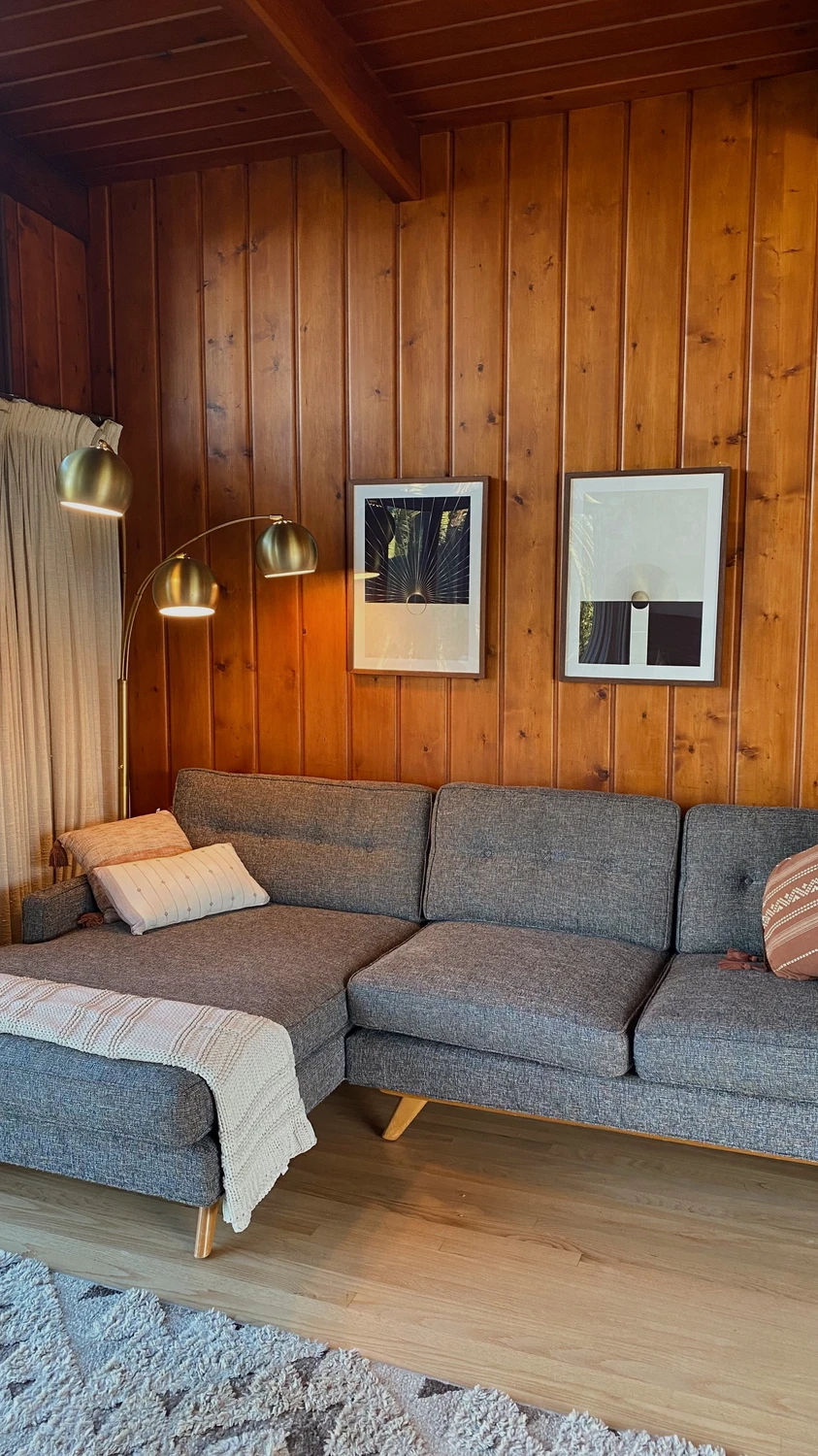
L-shaped sectionals are great because they kind of anchor a room without closing it off. You get that corner seating that feels cozy.
It works in small rooms as well as in big open spaces.
I’d put a textured rug under it and use a round coffee table instead of a square one. That softens all those hard angles. Then stick a floor lamp or a tall plant at the open end so it doesn’t feel lopsided.
3. U-Shape Sofa

Picture having everyone over: Family, friends, neighbors, and there’s actually enough seating where nobody’s stuck on the floor or across the room. Everyone’s close, conversation just happens.
That’s why U-shaped sofas are kind of perfect.
You need a big rug underneath and a coffee table that everyone can reach from wherever they’re sitting. Otherwise it doesn’t really work.
Pile on the cushions and throws to make it comfy. Then put floor lamps or side tables at the ends so it feels complete.
4. Floating Island – Living Room Layout Ideas
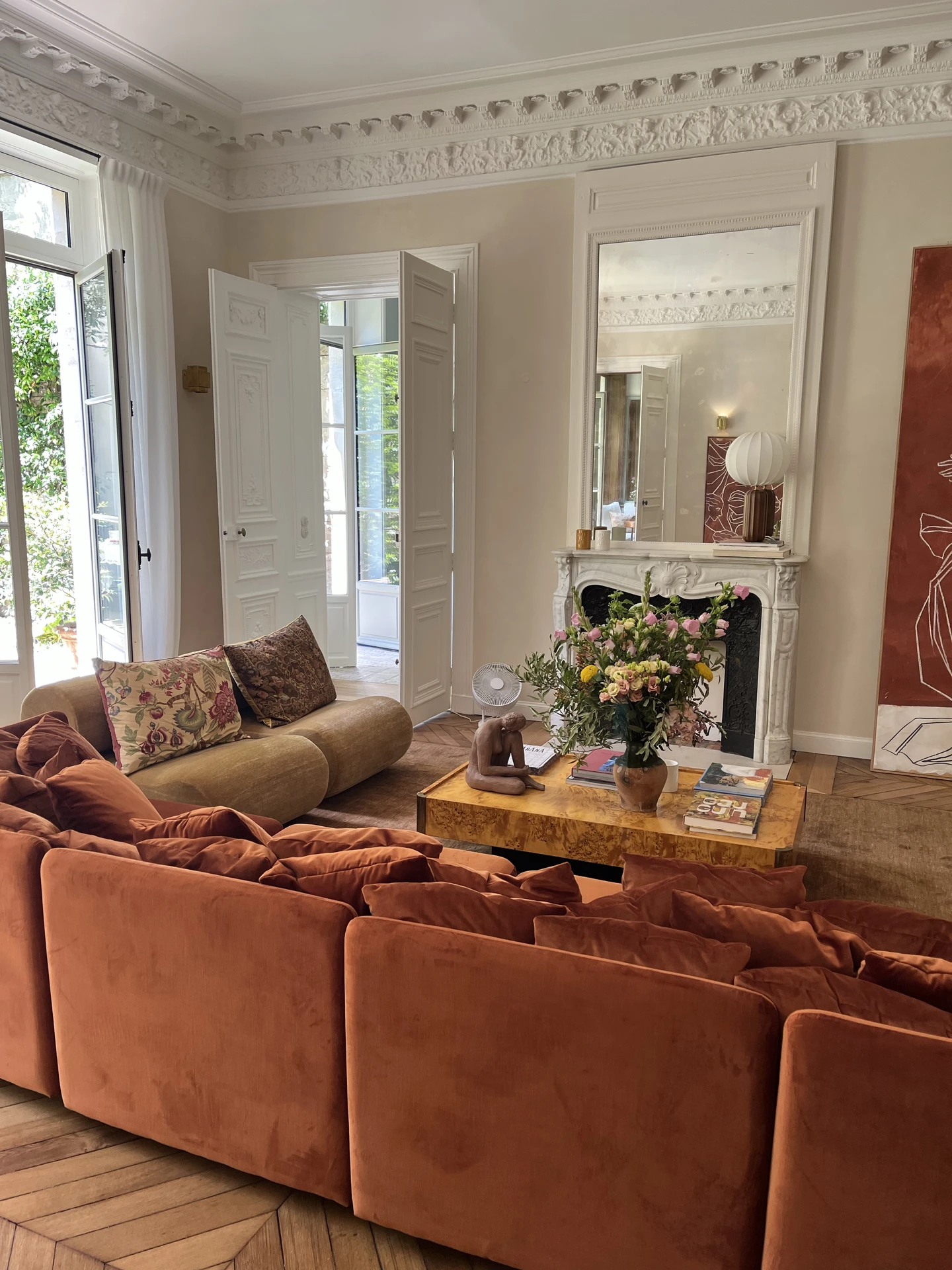
Imagine pulling your sofa and chairs off the walls a bit so they’re kind of floating in the middle of the room. Like a little island where everything’s centered.
This is perfect for open floor plans because it marks out your living area without boxing it in.
What you need is a big rug to anchor it all, a low coffee table in the middle and then something behind the sofa, maybe a console table or some plants. That way it doesn’t look weird from the back, like you just gave up halfway through decorating.
5. Window Nook
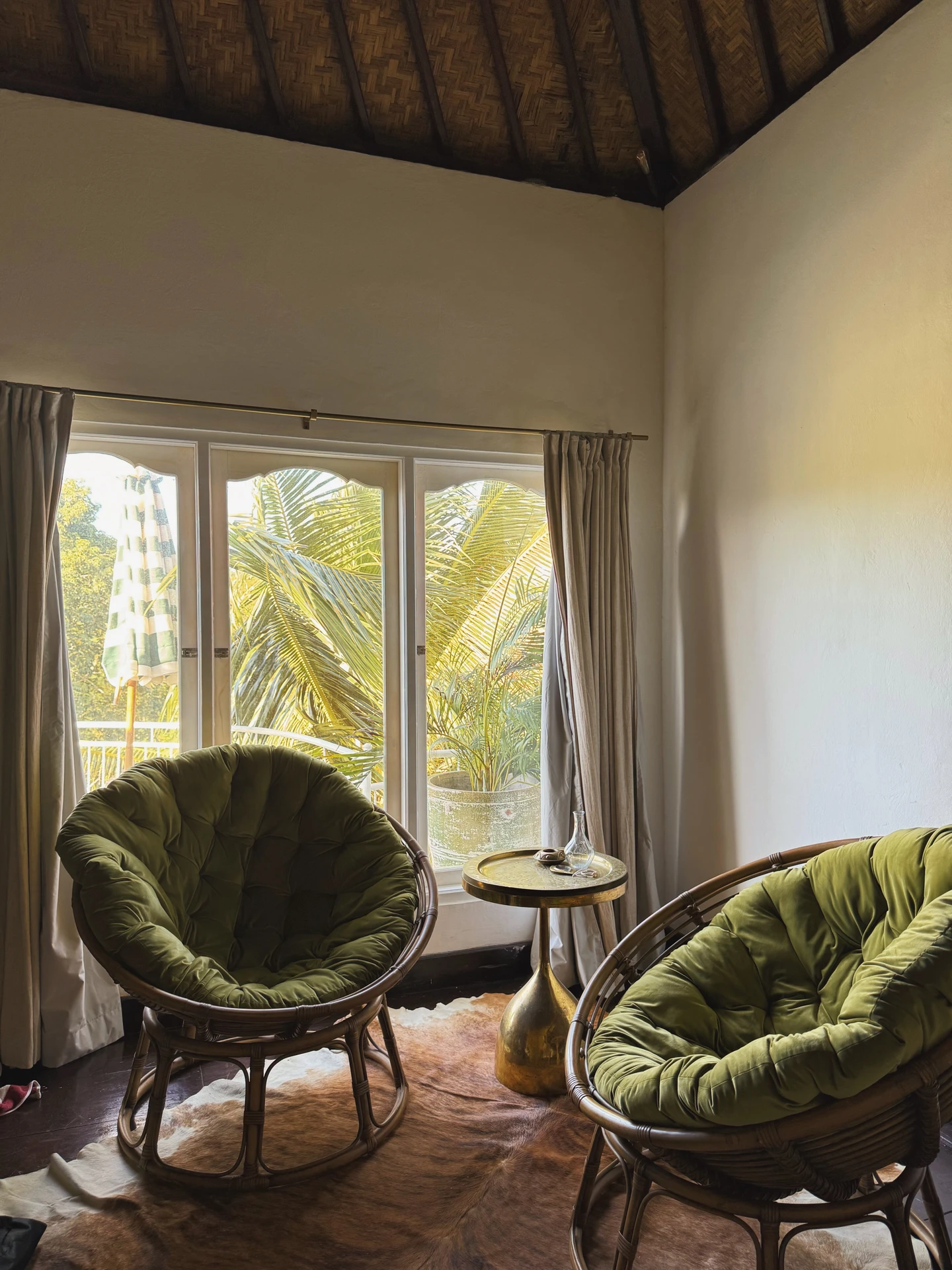
Window nooks are basically heaven if you’re into cozy spaces.
You get all that natural light pouring in and whatever’s outside becomes part of how the room looks.
The best setup is a built-in bench or a small loveseat piled with soft cushions and a throw. That makes it somewhere you actually want to curl up.
I’d add a little side table for your coffee or the book you’re reading and stick some plants on the windowsill. This adds life without ruining that cozy feeling.
6. Symmetry Classic
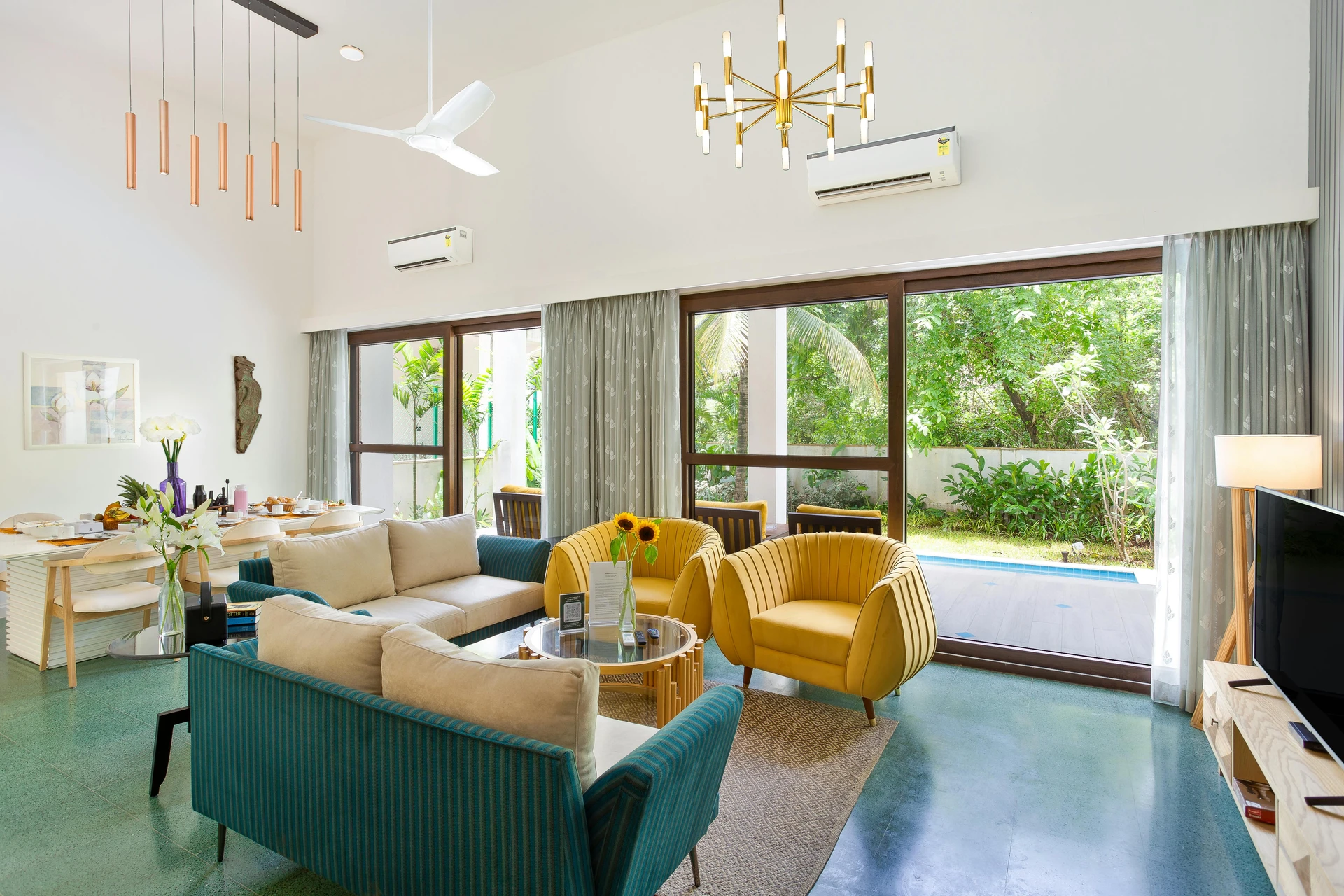
Want a living room that just feels balanced the second you walk in? Symmetry might be your thing.
Like putting two sofas across from each other or matching chairs on either side of a coffee table. That kind of setup.
It creates this calm, settled vibe that’s hard to get any other way.
It looks really good when you double up on things like same lamps on both sides, matching side tables or artwork that mirrors each other. Just don’t go overboard or it’ll feel too rigid.
Here’s the trick though: Bring in some textured cushions or a patterned rug to loosen it up.
7. Asymmetry Modern
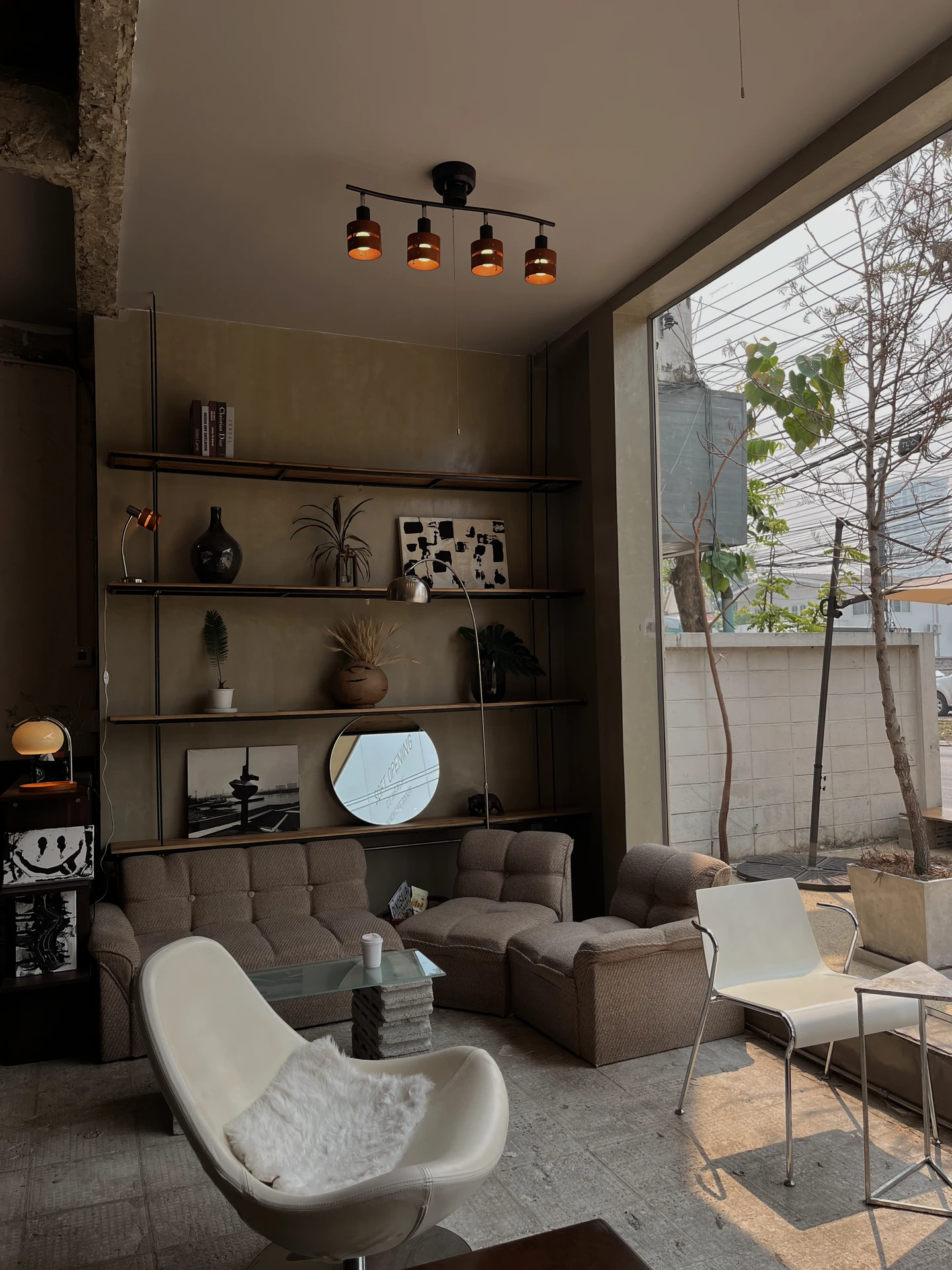
An asymmetry modern setup breaks away from rigid balance and creates a room that feels dynamic and full of character and personality.
For example, pairing a sectional with a single lounge chair on one side and a floor lamp on the other.
I think, this is one of the most flexible living room layout ideas, since it allows you to be creative .
You can combine different pieces of furniture, even those that don’t necessarily match at first glance.
This allows you to create an exciting look for your living room that visitors will never have seen before.
8. Club Circle – Living Room Layout Ideas
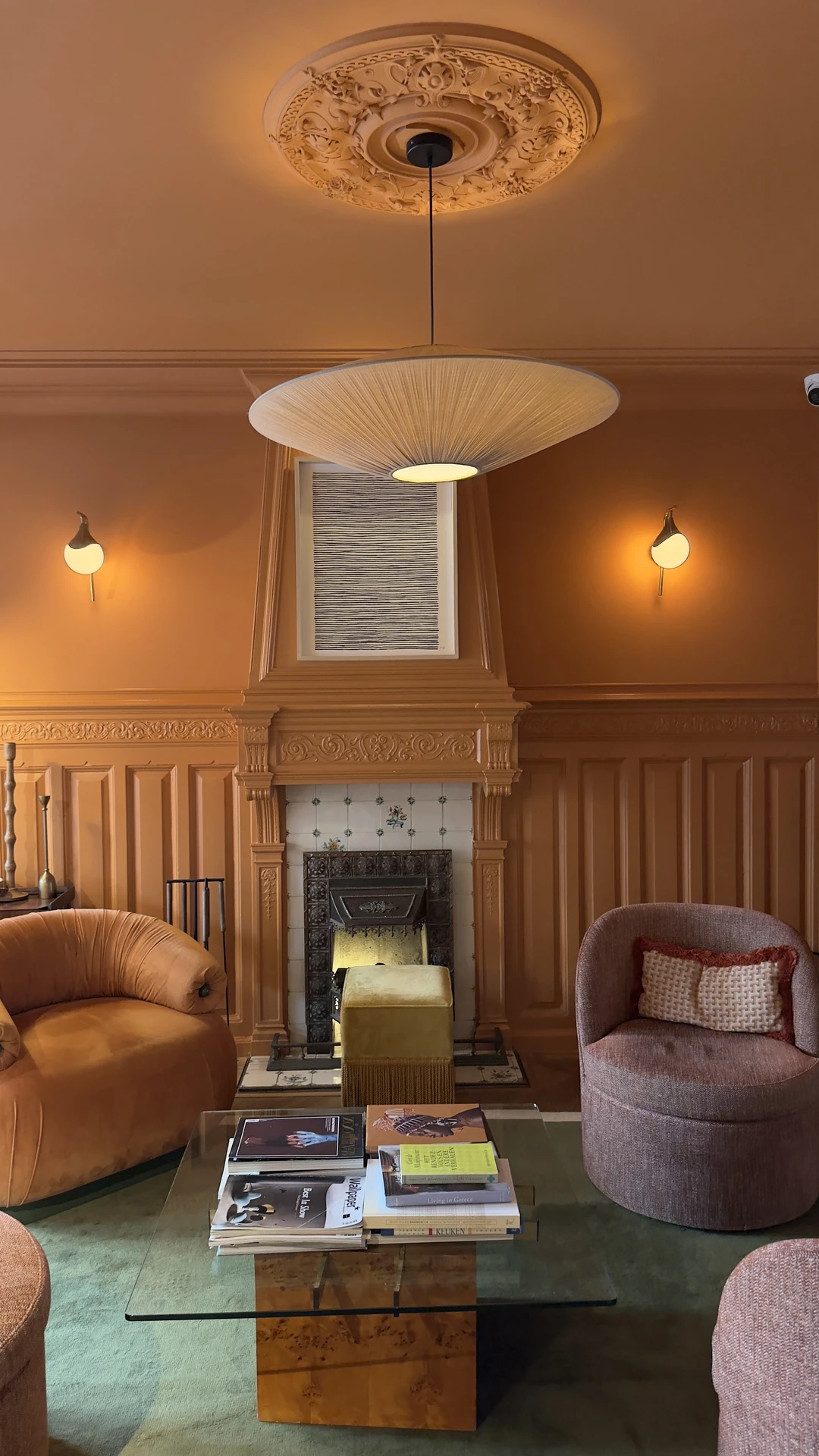
Think of a cozy lodge lounge or a relaxed hotel lobby, where chairs are grouped in a circle and everyone naturally leans in to talk.
That’s the feeling a club circle layout can bring to your home.
I suggest to add a round coffee table and a textured rug to the circle, plus small side tables.
I truly believe, this is one of the most inviting living room layout ideas, as it creates a natural flow for conversation and shared moments.
9. Fireplace Arrangement
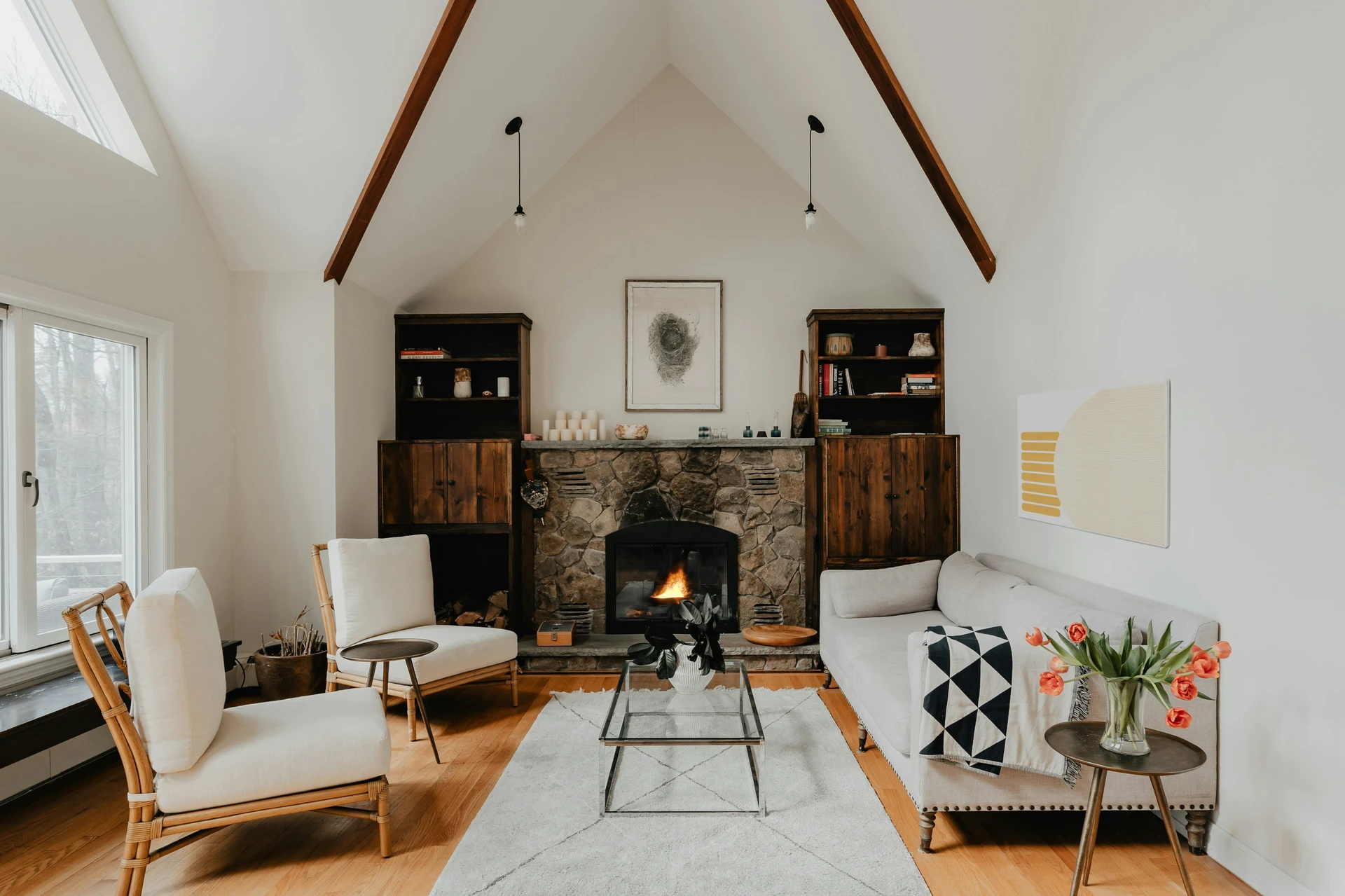
There’s something about a cold night and sitting by the fireplace with your coffee that just hits, right? It’s basically the coziest thing ever.
If you’ve got a fireplace, honestly, that should be the star of your living room. Don’t fight it. Arrange your couch and chairs so they’re facing it or at least angled toward it.
Then just layer in the cozy things. A good rug, some throw blankets you can actually use, maybe a couple things on the mantel but not like a whole store display. You want it to feel lived-in and warm.
That’s kind of the key: Keep it simple but comfortable.
10. TV-Corner Layout
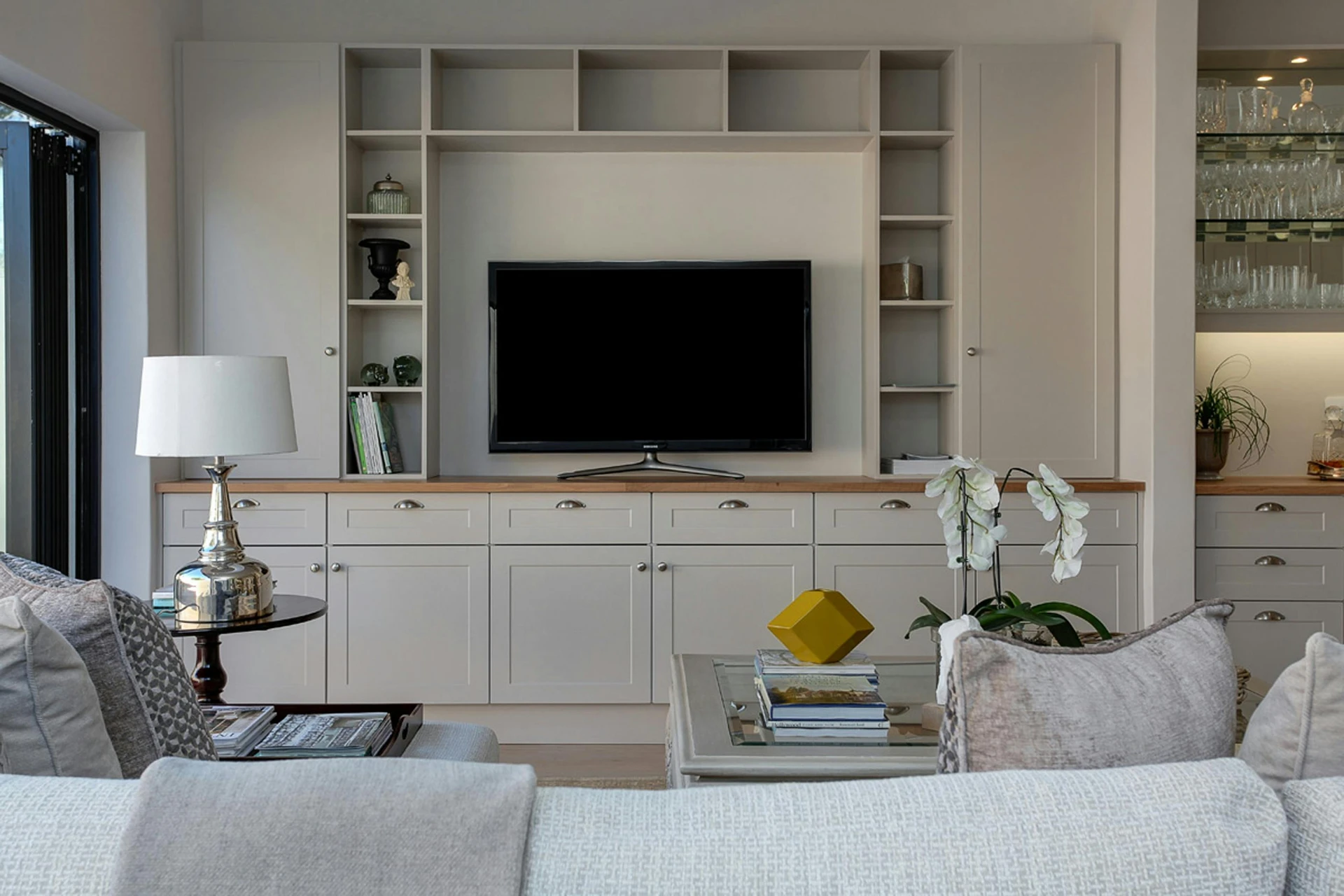
Some nights you just want to veg out in front of the TV with snacks and hot chocolate. No shame in that.
If your TV’s in a corner, the best setup I’ve found is a sectional that kind of wraps around it. Or maybe a couple chairs angled in. That way everyone’s facing the screen but it doesn’t feel like you built a literal shrine to your television, you know?
I recommend to add some actual decor around it. A narrow console table underneath, stick a plant there, set up a cool lamp. Suddenly it’s not just “the TV corner”. It blends in with the rest of your living room instead of being this awkward entertainment zone. Makes a huge difference.
11. Loveseat Pair
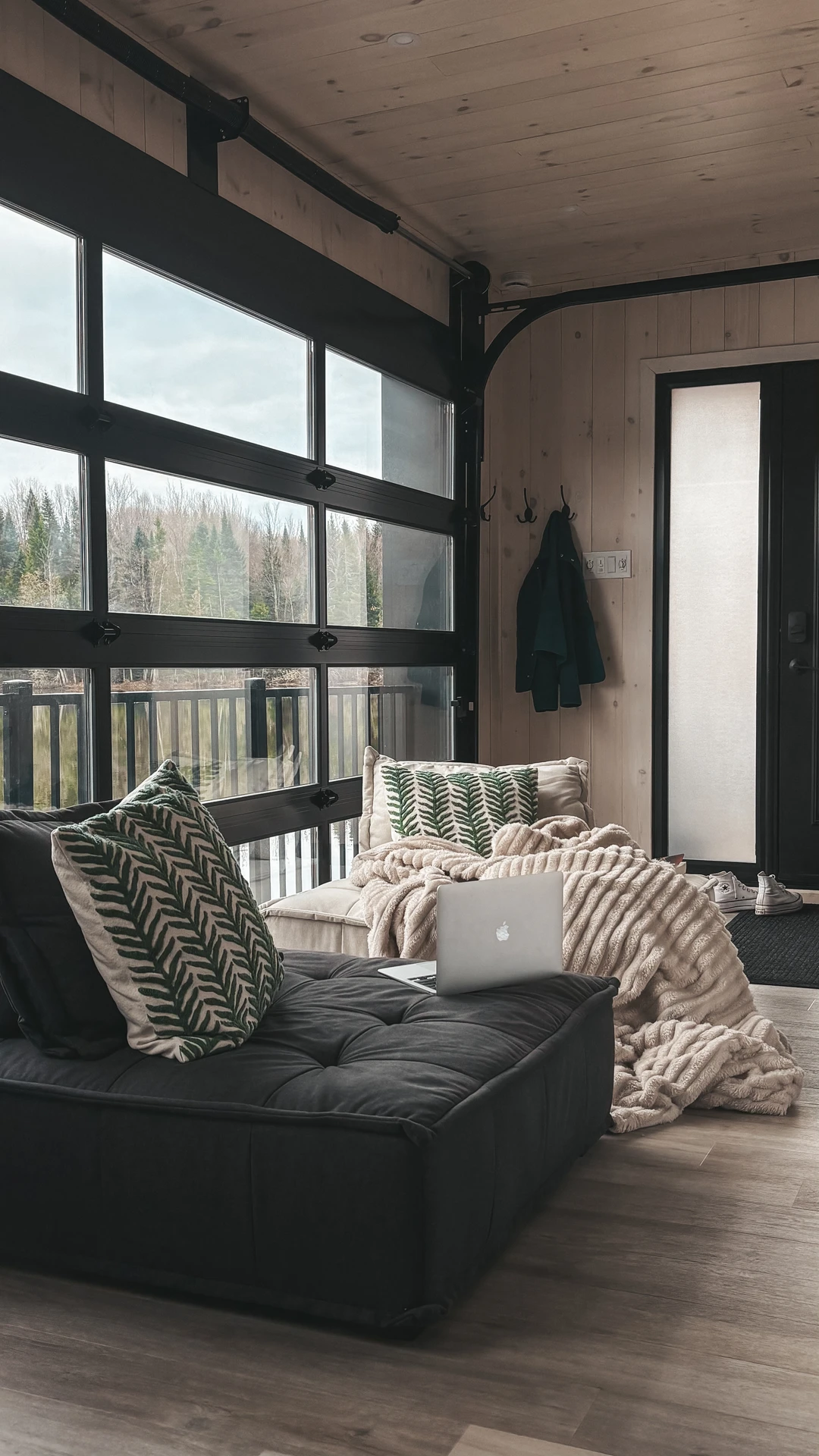
Two loveseats facing each other are especially good if you don’t have a ton of space. A big sectional can swallow a small living room whole, but two smaller loveseats? They trick your eye into thinking there’s more room than there actually is.
And then you can make it feel more finished without going overboard. E.g. put a textured rug under there. It grounds the whole set up. Then grab some matching pillows so it doesn’t look totally random.
Maybe drape a blanket over one of the armrests like you just casually left it there. That last part is key, by the way. It needs to look lived-in, not staged. Nobody actually believes you arrange your throw blanket that perfectly every single day.
12. Low-Lounge Den
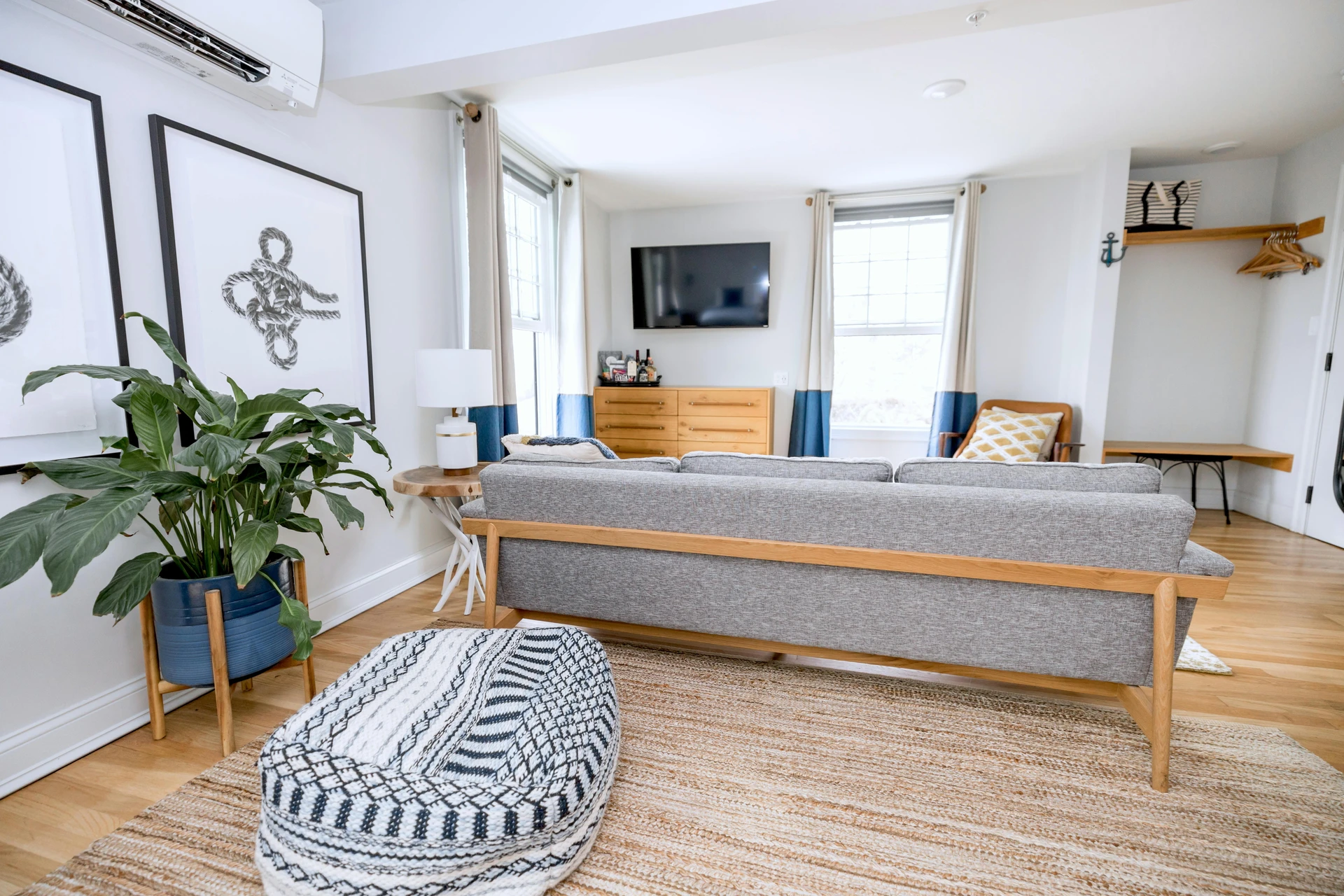
If you’re the type who wants to just melt into your couch and never leave, this is your vibe. We’re talking floor cushions, those ridiculously deep sofas where you literally sink in and disappear. You know the ones.
Perfect for people who can’t stand stuffy formal living rooms. A thick shaggy rug, huge pillows you can hug, soft blankets everywhere. More is more here, it should feel like a nest.
Oh, and your coffee table needs to be low. Like really low. If it’s normal height and everything else is on the floor, it looks weird and defeats the whole purpose.
Then add some floor lamps for that warm glow situation, maybe throw in a couple poufs so people have options for where to sit.
Honestly it’s the best setup for movie nights or just hanging out for hours.
13. Single Sofa – Living Room Layout Ideas
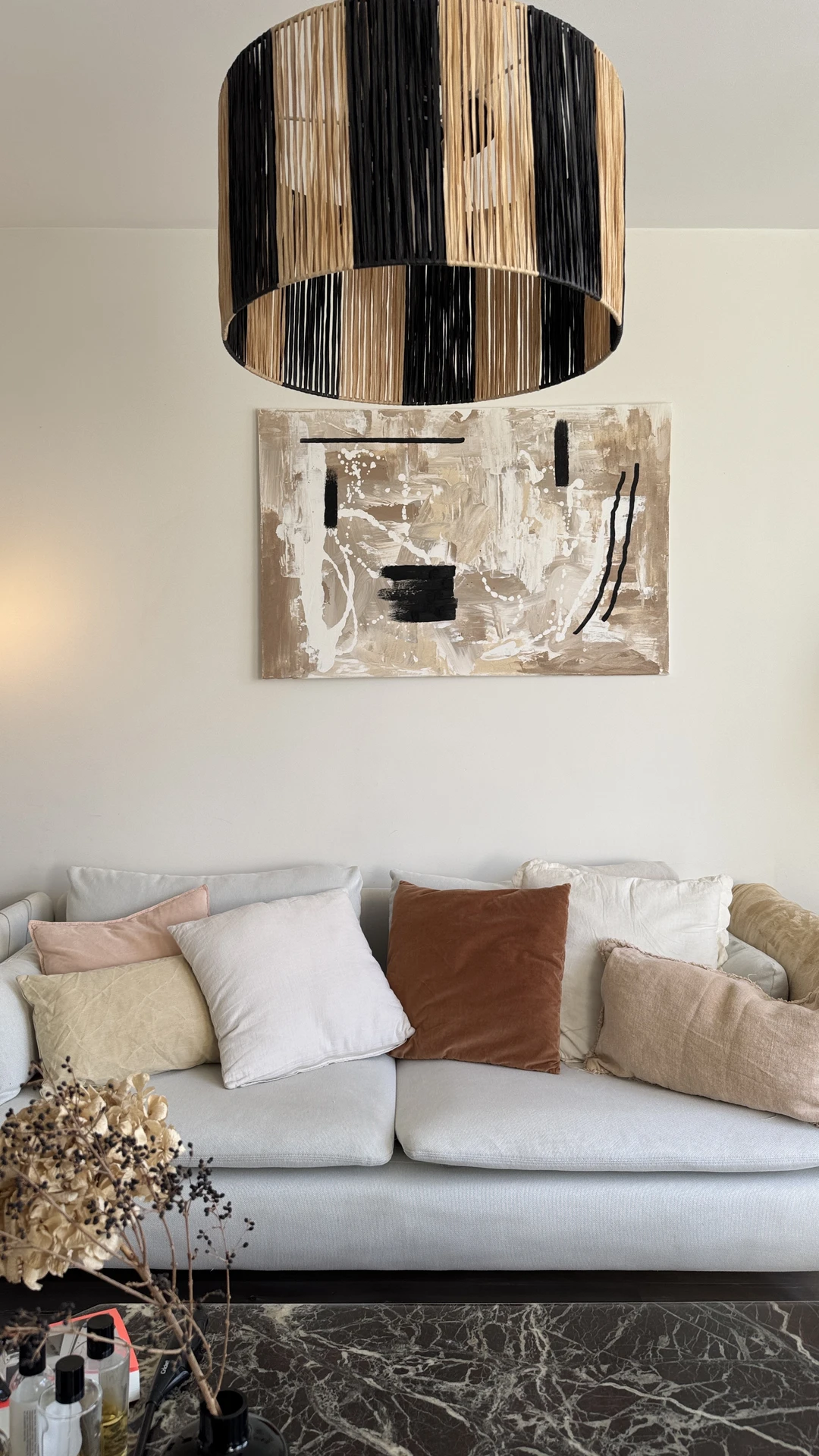
Sometimes a single sofa ends up being the most practical choice, whether it’s placed by a window for morning coffee, set across from a fireplace or used as a compact solution in a studio apartment.
This is one is a very flexible living room layout idea, since you can pair the sofa with a side table, a standing lamp or even a rug to create a small but defined zone.
In my eyes, keeping the wall behind it styled with art or floating shelves makes the area feel intentionally styled. You can also put an additional floor plant nearby.
14. Nesting Tables Instead Of One Coffee Table
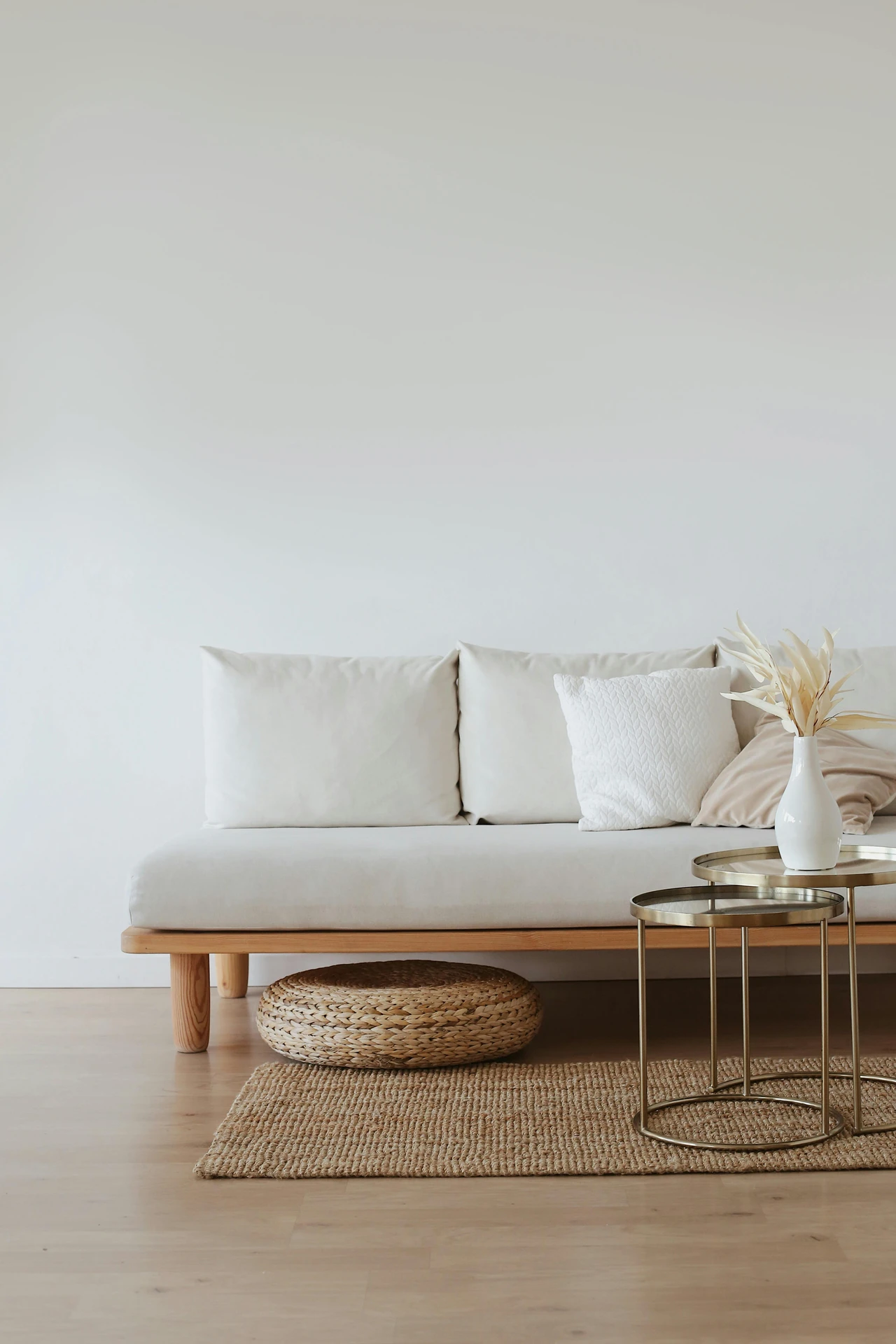
I’ve always liked the practical aspects of nesting tables.
You can spread them out when friends come over with drinks or tuck them neatly together when you want more open space.
In my opinion, this makes them a really smart solution, since they offer both flexibility and a modern touch.
My suggestion: Style them with a mix of a small plant, a candle and maybe a stack of books gives them character without overpowering the space.
You’re on the hunt for more coffee table decor ideas? I’ve got you covered! This blog post covers all your questions on the topic “how to decorate a round coffee table“.
15. Conversation Circle
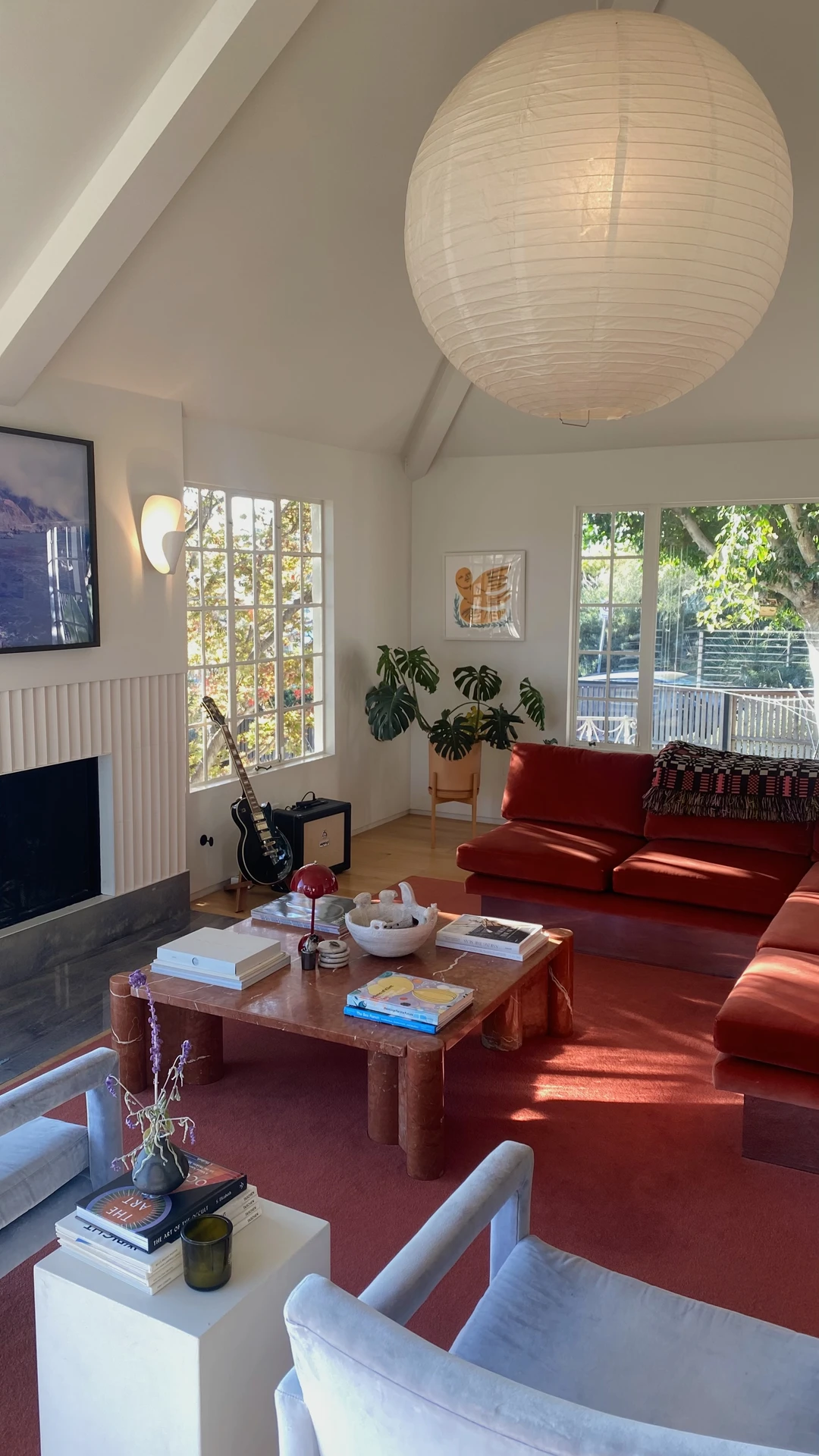
Arranging seats in a conversation circle invites everyone to the conversation.
This living room layout idea is timeless because it works just as well for casual family nights as for entertaining guests.
I think adding a round rug and a low central table for drinks or candles makes the setup feel a little extra cozy.
16. Sofa & Bench As Coffee Table
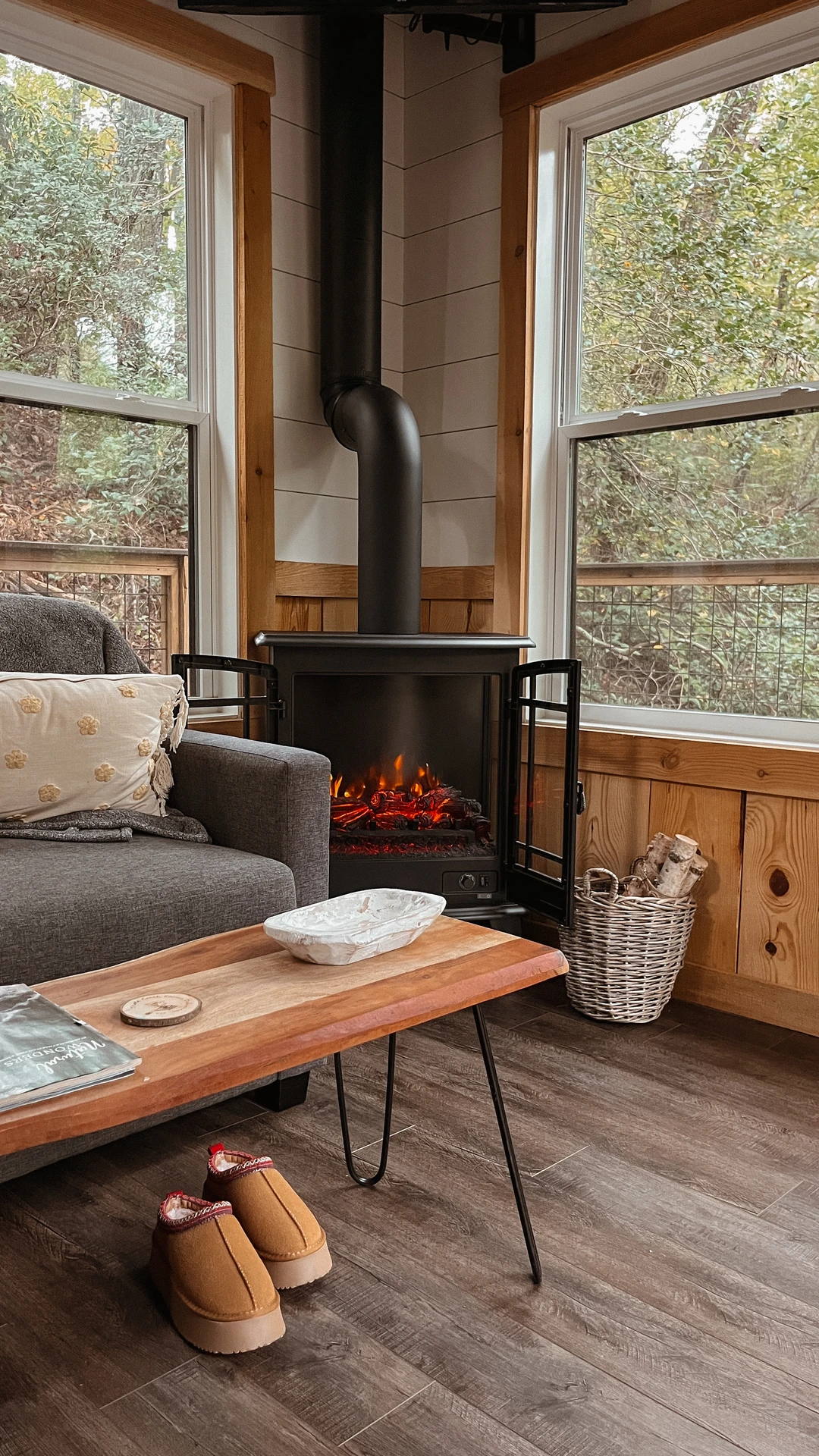
So here’s a weird trick: Swap your coffee table for a bench. Sounds random but it actually makes the room feel less cramped and heavy, especially if you’re working with limited space.
And bonus? When people come over and you’re short on seats, you’ve got instant extra seating. It’s way more useful than a regular coffee table just sitting there.
Style-wise, I’d put a tray on top with some books, maybe a candle, little vase with flowers. That keeps it from looking like you just forgot to buy a coffee table and used a bench instead (which is basically what you did, but nobody needs to know that haha)
Easy Fixes For Typical Design Errors
Even really nice living rooms can feel wrong somehow. Usually it’s just a couple small things that are throwing everything off. The good news? They’re all pretty easy to fix.
Here’s what I see people mess up all the time:
✅ Rug’s too small: This one kills me. If your rug looks like a postage stamp under your furniture, size up. At least the front legs of your couch should be on i, ideally all the legs, but front ones minimum. It pulls everything together.
✅ Lighting is too harsh: If your living room feels like a dentist’s office, it’s probably your bulbs. Swap them for warm ones, look for 2700-3000K on the box. Add a dimmer switch if you can, and get some table lamps going. Overhead lighting alone is nobody’s friend.
✅ Everything’s shoved against the walls: I get it, you think it makes the room look bigger. It doesn’t. Pull your couch out a bit, like even just a foot or two.
✅ Too much color chaos going on: If your living room looks like a rainbow, here’s a rule that actually helps: 60-30-10. So like, 60% of your room should be neutral stuff: Your walls, big furniture and so on. Then 30% is your main accent color. And 10% is where you go a little wild with pops of color.
✅ Your TV is running the show: Does everyone immediately stare at your massive television the second they walk in? Well, that’s a problem. Hang up some art around it to distract the eye or shift it off to the side a bit. Anything so it’s not the first and only thing people notice.
Wrapping Up: Bringing It All Together
Maybe you love when everything’s symmetrical and perfectly balanced. Or maybe you’d rather pull your furniture off the walls a bit. Or honestly, maybe you just need more lamps because one harsh overhead light is making everything feel cold and uninviting.
The point is: Do what feels right for you. Not what you think you’re supposed to do based on some design blog or Instagram account. You’re the one who has to live there.
And here’s what I’ve noticed: The choices that end up mattering most are often the ones that seem a little unconventional at first. Using a bench where a coffee table would normally go. Actually investing in a rug that feels substantial underfoot instead of that thin thing you’ve been making do with. Deciding to arrange everything around the fireplace instead of automatically centering the room on the TV.
Those small shifts? They’re what transforms a living room from “yes, this is technically a living room” to “I actually really like being in this space.” And that’s the whole point.
If you need more inspiration on how to decorate or organize your home, feel free to take a look around my blog!
Did you enjoy this article?
If you’d like, treat me to a coffee ☕ Your support means the whole world to me!
